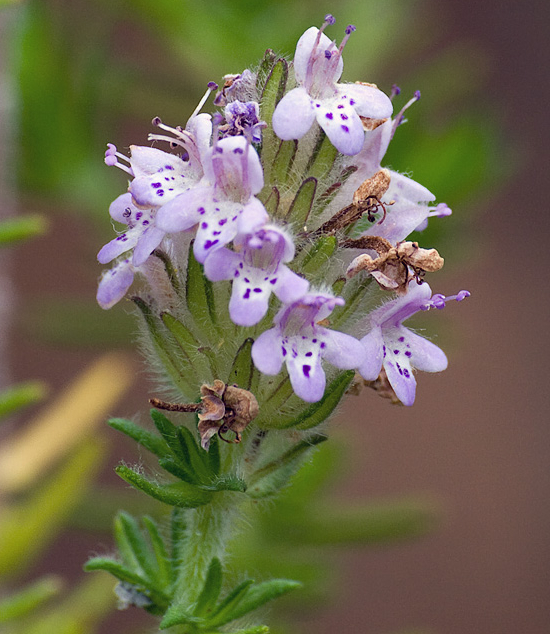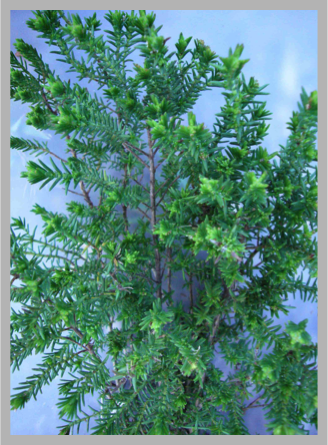Florida Pennyroyal: Piloblephis rigida
You will thoroughly enjoy tea made by Florida’s native pennyroyal, or maybe even a Mint Julep Floridana.
An evergreen, pennyroyal is found only in peninsular Florida, a few western Bahamas islands, and maybe a foot or two across the state line into Georgia. It is unlike all other mints and is in a class all by itself, a family of one with the botanical name of Piloblephis rigida (pil-oh-BLEF-is RIDGE-jid-du.)
First it was called Satureja rigida, then Pycnothymus rigida and lastly Piloblephis rigida. Pilo in Greek is hairy, and blephis is eyelid, referring to hairs on the blossom. Rigida refers to the stiff branches. For folks who’ve lived in more northern climes, the Florida Pennyroyal looks like a soft, green little juniper bush, minus the berries and sharp needle points leaves.
The Mickosukee and Seminoles enjoyed brewing tea from it and flavored soups with pennyroyal. They also would put it in a small bag of it in a pet’s bed to repel fleas. Its oil has been used as an insect repellant. It fact, it was considered a promising compound but the plant does not produce a consistent amount of the oil, some plants none at all. More than that, the plant is rather scarce. It blooms primely November to April but can blossom all year. It used to be a good nectar producer for bees, but no longer is considered reliable. However, butterflies like it and it’s a tough and pretty plant for xeriscaping on acidic soil. Propagation is usually from root cuttings. The species is not easy to transplant. I’ve only seen it growing in a few places in central Florida, usually along paths or woods roads through palmetto/pine scrub. It is rare to find one plant by itself. While they don’t grow in colonies per se but they will line up along a trail or path.
Florida’s pennyroyal had a significant place among Native AMericans, from the practical to the ceremonial. It was added to food after there was a recent death in the family, and was used as an emetic during religious ceremonies. It was prescribed for colds, fevers, dermatological problem, sores and ulcers of the legs and feet, and chronically ill babies. Besides a flavoring it was also used like smelling salts to revive the unconscious.
Though called pennyroyal, it is not related to the common pennyroyal, Mentha pulegium. Florida pennyroyal carries, however, the same warning and should be avoided by those pregnant. Making tea depends upon personal preference. I use about a quarter teaspoon of dried leaves per cup of hot water. Adjust according to taste.
As for the English word “pennyroyal.” It started out in Latin as puleium, or flea bane — drive away fleas. From there it became pulex. Then the Normans changed it to puliol. Soon it was pennyroyal, and the Indians used it to drive away fleas… small world.
Green Deane’s “Itemized” Plant Profile
IDENTIFICATION: Five-lipped flowers, two up, three below, top petals pale purple, lower petals dotted purple, four stamen, blooms all year, least in the hot summer months. Leaves opposite, numerous, thick, needle-like, evergreen. Stem woody, usually less than a foot tall.
TIME OF YEAR: Available all year
ENVIRONMENT: Usually found in the same environment as gopher apples, id est, dry sandy habitats, xeric sites, oak hammocks, sand hills, longleaf pine/turkey oak sand hills, sandy pine flatwoods, scrub, barrens, dunes and similar habitats.
METHOD OF PREPARATION: Fresh or dried leaves for tea for flavoring. An intense mint, use sparingly.



